Image
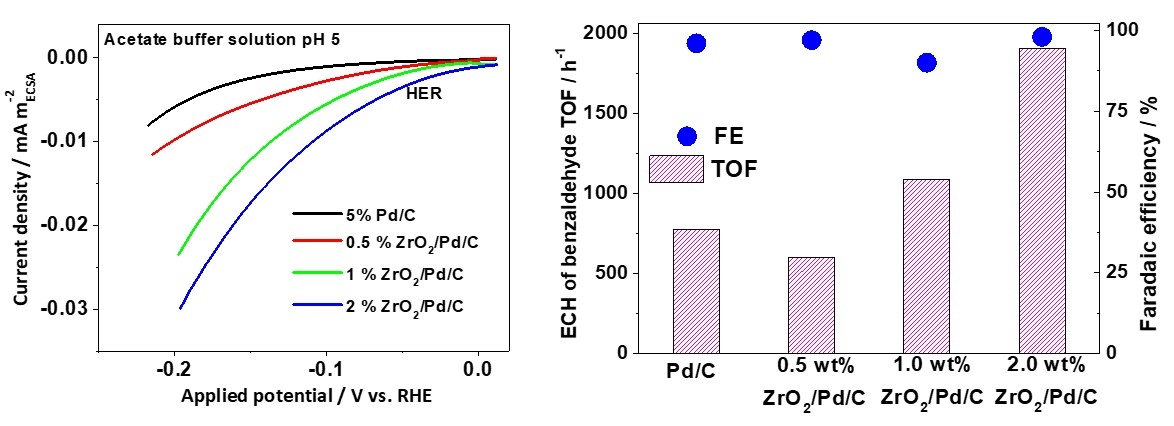
August 22 - 26, 2021

Join PNNL at ACS Fall 2021
American Chemical Society and Timothy Holland, PNNL
Attending the American Chemical Society (ACS) Fall meeting? So are we…well, virtually.
Below is a full list of the symposiums, presentations, and posters Pacific Northwest National Laboratory (PNNL) researchers are a part of at this year’s ACS Fall meeting. Sessions include:
We hope to see you there.
If you’re a chemist and curious about what it’s like to work at a national laboratory like PNNL, sign up to chat with one of our recruiters.
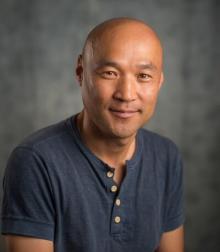
Sunday, August 22, 9:40 AM to 10:00 AM EST
Presenter: Kee Sung Han
PNNL Contributors: Mal-Soon Lee, Sujong Chae, Vijayakumar Murugesan, and Dr. Karl Mueller
Summary: Lithium hexafluorophosphate (LiPF6) salt in carbonate-based solvents have been widely used as an electrolyte in commercial lithium-ion batteries (LIBs) for over three decades. The poor thermal stability of these electrolytes limits high temperature operation of LIBs. Read More.
Sunday, August 22, 10:30 AM to 11:00 AM EST
Presenters: Mal-Soon Lee, Manh-thuong Nguyen, Johannes Lercher, John Holladay, Jamie Holladay, Asanga Padmaperuma, Oliver Gutierrez, Abhijeet Karkamkar, Juan Lopez-Ruiz, Vanda Glezakou, and Roger Rousseau
Summary: The hydrogenation of organic molecules offers a way to combine renewable electrical energy and chemical conversions with an eye towards storing electrical energy in high energy chemical bonds or enabling distributed processing of waste carbon, such as biomass and waste water sludges, into chemicals and fuels. Read More.
Sunday, August 22, 11:30 AM to 11:50 AM EST
Presenters: Manh-thuong Nguyen, Mal-Soon Lee, Vanda Glezakou, and Roger Rousseau
Summary: Contrary to solid/gas interfaces, in solid/liquid interfaces the molecules in the liquid can be organized such that those near the surface are appreciably different from the bulk. Read More.
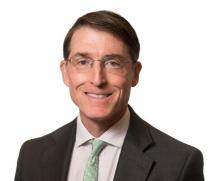
Sunday, August 22, 4:30 PM to 5:00 PM EST
Presenter: Jud Virden
Summary: As the world accelerates its efforts to transform our current energy system into one with net-zero emissions, the National Academies of Science1 has identified five key technology goals to accelerate decarbonization. Read More.
Sunday, August 22, 7:00 PM to 7:30 PM EST
Presenter: Wei Wang
Summary: Until very recently, the choice of electroactive materials in aqueous RFBs has been limited mostly to transition metal redox species, such as all-vanadium RFBs, which however are limited by the high cost of vanadium. Read More.
Sunday, August 22, 8:00 PM to 8:20 PM EST
Presenter: Amanda Howard
PNNL Contributors: Panagiotis Stinis
Summary: We develop a multifidelity model for predicting the charge-discharge curve of a redox flow battery (RFB). Read More.
Sunday, August 22, 8:00 PM to 8:30 PM EST
Presenters: Yang Qiu, Juan Lopez-Ruiz, Jamie Holladay, and Oliver Gutierrez-Tinoco
Summary: We synthesized RuO2 and Pt nanoparticles to apply them as catalysts for electrocatalytic decarboxylation (ECDX) of valeric acid in water. Read More.
Sunday, August 22, 8:40 PM to 9:00 PM EST
Presenter: Peiyuan Gao
PNNL Contributors: Amity Anderson, Vijayakumar Murugesan, Aaron Hollas, and Wei Wang
Summary: The ever-growing energy demand has necessitated the exploration of renewable energy resources, such as wind and solar energy, which are expected to contribute a great proportion to the total energy supply in future. Read More.

Monday, August 23, 8:00 AM to 8:30 AM EST
Presenter: Yang Qiu
PNNL Contributors: Yuyan Shao
Summary: Proton transfer plays an important role to determine the overall reaction rate (activity) in both catalytic and electrocatalytic reactions, including hydrogen evolution reaction (HER), electrocatalytic hydrogenation reaction (ECH), etc. Read More.
Monday, August 23 AM, 11:15 to 11:40 AM EST
Presenter: Aaron Appel
PNNL Contributors: Darrell Mayberry, John Linehan, and Eric Wiedner
Summary: The widespread and efficient use of carbon-neutral energy will be facilitated by the storage of this energy in the form of high energy density fuels. Read More.
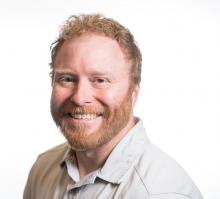
Monday, August 23, 11:30 AM to 11:45 AM EST
Presenter: David Heldebrant
Summary: Dictionary.com defines the word voluntold comes from combining volunteer with told, as in being told what to do. I began by involvement with ACS by being voluntold by none other than the one and only Janet Bryant, the 2020 recipient of the National Award for Volunteer Service. Read More.
Monday, August 23, 3:20 PM to 3:40 PM EST
Presenter: Kaining Duanmu
PNNL Contributors: Amity Andersen, Peiyuan Gao, Wei Wang, and Vijayakumar Murugesan
Summary: The conductor-like screening model for real solvents (COSMO-RS) is a powerful method for predicting thermodynamic properties of small molecules, such as solvation energy, vapor pressure, and solubility in mixed solvents. Read More.
Monday, August 23, 3:40 PM to 4:00 PM EST
Presenter: Tianzhixi Yin
PNNL Contributors: Emily Saldanha
Summary: Due to the importance of solubility as a performance driver in energy storage and many other applications, there has been significant work applied to the development of predictive models to infer molecular solubility from molecular structure in order to support material selection and design. Read More.
Monday, August 23, 4:30 PM to 4:50 PM EST
Presenters: Richard Zheng, Yuan Jiang, Dushyant Barpaga, Phillip Koech, Deepika Malhotra, Andy Zwoster, Charles Freeman, and David Heldebrant
Summary: Solvent-based scrubbing of CO2 from post-combustion exhaust streams are the most mature technologies, and likely the only ones able to be deployed at commercial scale within the next decade, by 2030. Read More.

Monday, August 23, 5:30 PM to 5:50 PM EST
Presenter: Deepika Malhotra
PNNL Contributors: Phillip Koech, David Heldebrant, Manh Thuong Nguyen, Vanda Glezakou, Roger Rousseau, and Richard Zheng
Summary: The capture of Carbon Dioxide (CO2) from power generation is requisite for its conversion or sequestration. Solvent-based technologies including alkanolamines such as monoethanolamine (MEA) or diethanolamine (DEA) have been deployed for the post-combustion CO2 capture processes to reduce CO2 emissions in the industrial processes. Read More.
Tuesday, August 24, 5:20 PM to 5:40 PM EST
Presenter: Brittany Robertson
PNNL Contributors: Jesse Bruner, Matthew O'Hara, and Jon Schwantes
Summary: Experimental methods for determining the last chemical process age and geological origin of uranium material is of value to the nuclear nonproliferation and safeguards community. Read More.
Tuesday, August 24, 5:20 PM to 5:45 PM EST
Presenter: Konstantin Khivantsev
Summary: Atomically dispersed transition metals (Ru, Pd and Pt) have been prepared on CeO2 and evaluated for NOx/CO abatement applications for diesel and gasoline engines, such as low temperature passive NOx adsorption (PNA), NO and CO oxidation, and three-way-catalysis (TWC). 0.5 wt% Ru/CeO2 shows remarkable PNA performance, better than 1 wt% Pd/Zeolite adsorbers: it achieves 100% removal of NOx during vehicle cold start. Read More.
Tuesday, August 24, 5:45 PM to 6:05 PM EST
Presenter: Konstantin Khivantsev
Summary: NO reduction with CO is a way to mitigate harmful nitric oxide emissions in gasoline engines. Read More.

Tuesday, August 24, 7:30 PM to 7:45 PM EST
Presenter: Marcel Baer
PNNL Contributors: Simone Raugei
Summary: The plant acyl-acyl carrier protein (ACP) desaturases are a family of soluble enzymes that convert saturated fatty-acyl ACPs into their cis-monounsaturated equivalents in an oxygen-dependent reaction. Read More.
Wednesday, August 25, 8:40 AM to 9:00 AM EST
Presenter: Linxiao Chen
PNNL Contributors: Libor Kovarik and Janos Szanyi
Summary: Interests in noble metal single-atom catalysts (SACs) have been on the rapid rise. A factor that complicates single-atom catalysis is the instability and mobility of single metal atoms, which often leads to dynamic, condition-dependent catalyst structures. Read More.
Wednesday, August 25, 12:08 PM to 12:28 PM EST
Presenter: Kristen Campbell
PNNL Contributors: Michael Thorson, Richard Hallen, Alan Cooper, Tessa Oxford, and Dr. John Tim Bays
Summary: This symposium covers sustainable hydrocarbon and oxygenated fuels to broaden energy resilient options for ground transportation, marine, and aviation. Read More.
Wednesday, August 25, 3:00 PM to 3:20 PM EST
Presenter: Konstantin Khivantsev
PNNL Contributors: Nicholas Jaegers, Yong Wang, Jianzhi Hu, and Janos Szanyi
Summary: Despite over 50 years of research, no studies have captured the intermediates of ethylene di-/oligomerization on metal ions on any solid support. Read More.
Wednesday, August 25, 5:30 PM to 5:50 PM
Presenter: Manh Thuong Nguyen
PNNL Contributors: Jun Zhang, Venkateshkumar Prabhakaran, Shuai Tan, Eric Baxter, Vaithiyalingam Shutthanandan, Grant Johnson, Roger Rousseau, and Vanda Glezakou
Summary: How specific functional groups influence the adsorption of solvated ions and water at liquid/graphene oxide interfaces remains elusive. Read More.
Wednesday, August 25, 7:05 PM to 7:25 PM EST
Presenter: Xiao-Ying Yu
PNNL Contributors: Jiyoung Son, Shalini Tripathi, Shawn Riechers, and Edgar Buck
Summary: Spent fuel storage in engineered barrier system (EBS) presents a multi-faceted technical challenge. The oxidation of uranium oxide (UO2) spent fuel could happen from radiolysis of water in a reducing environment in the EBS. Read More.
Thursday, August 26, 8:25 AM to 8:45 AM EST
Presenter: Linxiao Chen
PNNL Contributors: Yifeng Zhu, Laura Meyer, Lillian Hale, Thuy Le, Abhijeet Karkamkar, Johannes Lercher, Oliver Gutierrez, and Janos Szanyi
Summary: Plastics play irreplaceable roles in a wide range of industries and are produced on a large scale. Nonetheless, the low recycle rate and resistance towards degradation of the plastic waste pose severe threats to the environment. Read More.
Thursday, August 26, 11:30 AM to 11:45 AM EST
Presenter: Samantha Johnson
PNNL Contributors: Marcel Baer and Simone Raugei
Summary: Identification of molecules and elucidation of their chemical structure are ubiquitous problems in chemistry. Mass spectrometry (MS) has frequently been applied for these purposes due to its sensitivity and versatility, as it can be applied to single compounds or complex mixtures. Read More.
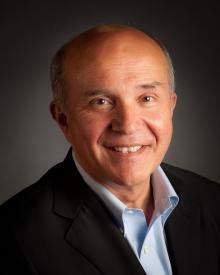
Thursday, August 26, 11:40 AM to 12:10 PM EST
Presenter: Johannes Lercher
Summary: While a long tradition in oxidation catalysis exists to define properties of active sites, the fundamental insight is largely linked to model studies (including elegant work on gas phase clusters) and theory. Read More.
Thursday, August 26, 3:00 PM to 3:30 PM EST
Presenter: Jennifer Lee
Summary: U.S. Department of Energy national laboratories are powerhouses of innovation with specific capabilities and expertise that enable the public to lead their lives safely, more comfortably, and more securely. Read More.
Thursday, August 26, 2:00 PM to 2:20 PM EST
Presenter: Samantha Johnson
PNNL Contributors: Ba Tran, Kriston Brooks, and Tom Autre
Summary: Storing intermittent renewable energy sources is key their continued widespread adoption. One potential use case for renewable sources is microgrids – an energy network serving a small community alone, or as a component of the broader energy grid. Read More.
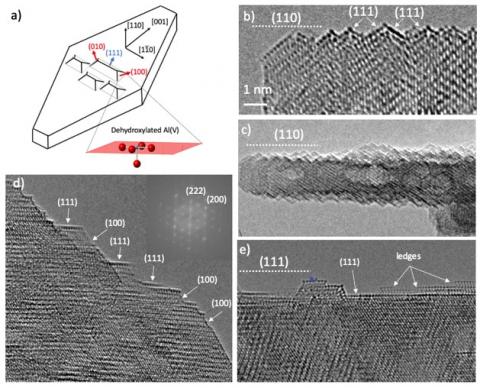
Thursday, August 26, 4:30 PM to 4:50 PM EST
Presenter: Konstantin Khivantsev
PNNL Contributors: Nicholas Jaegers, Janos Szanyi, and Libor Kovarik
Summary: γ-alumina is one of the oldest and most important commercial catalytic materials with high surface area and stability. These attributes enabled its use as the first commercial large-scale heterogeneous catalyst for ethanol dehydration. Read More.
Thursday, August 26, 7:35 PM to 8:05 PM EST
Presenter: Oliver Gutierrez-Tinoco
PNNL Contributors: Laura Meyer and Johannes Lercher
Summary: We aim to control hydrogenation of biogenic, oxygen-containing, molecules in water at near ambient temperature. Read More.
Sunday, August 22, 10:30 AM to 12:20 PM EST
Sunday, August 22, 2:00 PM to 3:50 PM EST
Presider: Ana Arteaga

Sunday, August 22, 8:00 AM to 10:00 AM EST
Sunday, August 22, 4:30 PM to 6:30 PM EST
Sunday, August 22, 7:00 PM to 9:00 PM EST
Monday, August 23, 10:30 AM to 12:30 PM EST
Monday, August 23, 2:00 PM to 4:00 PM EST
Organizer: Vijay Murugesan
Summary: Accelerated discovery of optimal and resilient materials for energy storage and conversion devices can produce enormous societal and technological progress. Read More.
Tuesday, August 24, 8:00 AM to 10:00 AM EST
Tuesday, August 24, 10:30 AM to 12:30 PM EST
Wednesday, August 25, 10:30 AM to 12:30 PM EST
Wednesday, August 25, 2:00 PM to 4:00 PM EST
Wednesday, August 25, 4:30 PM to 5:30 PM EST
Organizer: Xia Cao
Summary: Commercial and industrial businesses have deployed energy conversion and storage (e.g., battery and electrocatalysis) systems to improve the energy efficiency and energy density of their operations. Read More.
Tuesday, August 24, 4:30 PM to 6:30 PM EST
Wednesday, August 25, 8:00 AM to 10:00 AM EST
Organizers: Brittany Robertson and Jon Schwantes
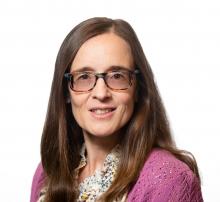
Wednesday, August 25, 10:30 AM to 12:30 PM EST
Wednesday, August 25, 2:00 PM to 4:00 PM EST
Thursday, August 26, 10:30 AM to 12:30 PM EST
Thursday, August 26, 2:00 PM to 3:05 PM EST
Organizers: John Tim Bays and Vanessa Dagle
Summary: This symposium covers sustainable hydrocarbon and oxygenated fuels to broaden energy resilient options for ground transportation, marine, and aviation. Read More.
Thursday, August 26, 10:30 AM to 12:30 PM EST
Organizer: Gabriel Hall
Thursday, August 26, 7:00 PM to 9:00 PM EST
Organizer: Yuyan Shao
Summary: Design and evaluation of materials and devices of energy and fuel conversion. Read More.
Tuesday, August 24, 7:00 PM to 9:00 PM EST
Author: Sakshi Yadav
Summary: Previously we have shown we could use Rosetta to design proteins that exhibited a lattice match to mineral surfaces. Read More.
Tuesday, August 24, 7:00 PM to 9:00 PM EST
Author: Konstantin Khivantsev
PNNL Contributors: Janos Szanyi, Nicholas Jaegers, and Miroslaw Derewinski
Summary: Cu/Zeolites efficiently catalyze selective reduction of environmentally harmful nitric oxide with ammonia. Despite over a decade of research, the exact NO reduction chemistry remains unknown. Read More.
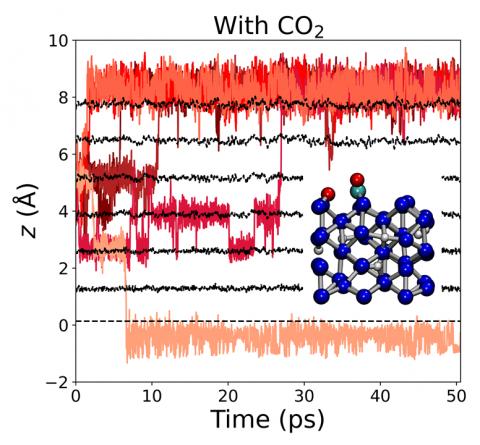
Wednesday, August 25, 7:00 PM to 9:00 PM EST
Author: Sarah Allec
PNNL Contributors: Manh Thuong Nguyen, Roger Rousseau, and Vanda Glezakou
Summary: The catalytic reduction of carbon dioxide is a crucial step in many chemical industrial reactions, such as methanol synthesis, the reverse water-gas shift reaction (rWGS) and formic acid synthesis. Read More.